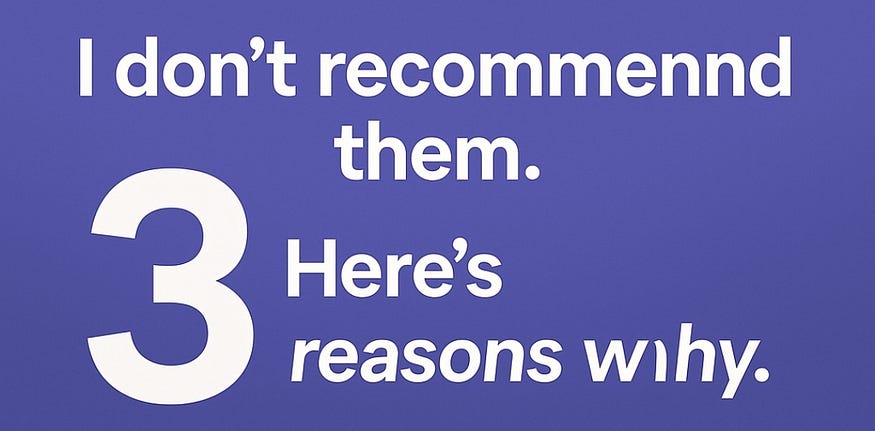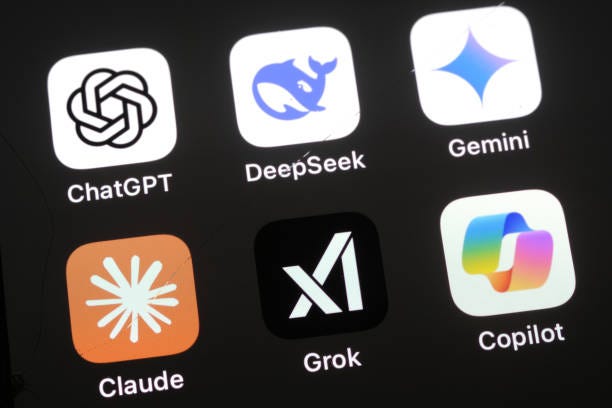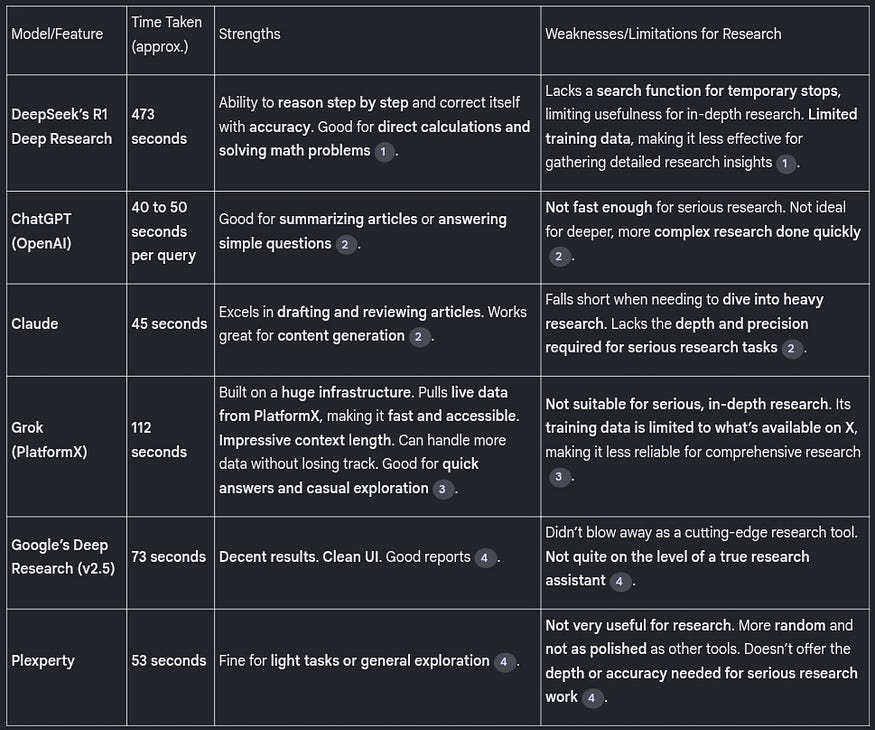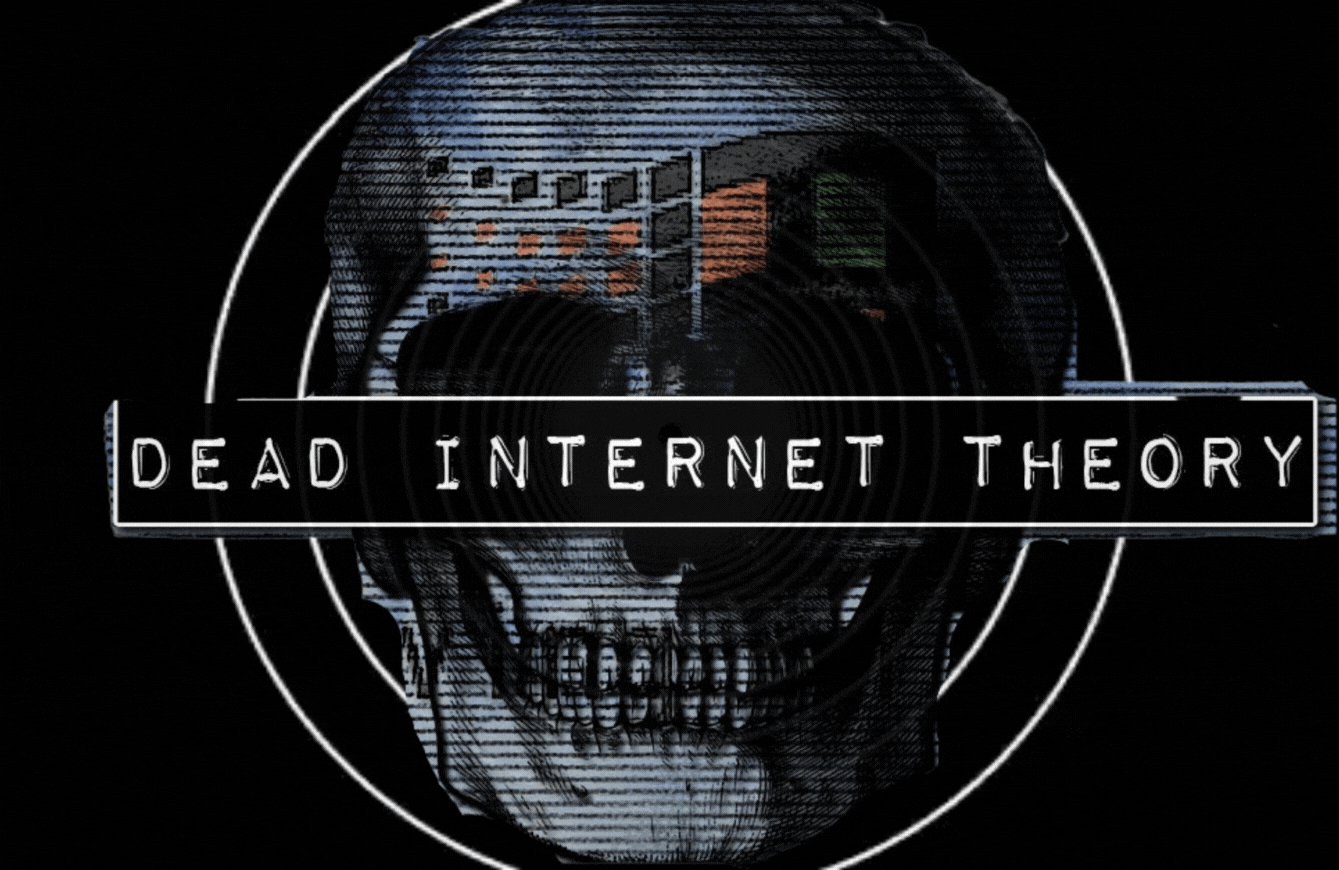I tried the “Deep Research ” feature in Gemini, ChatGPT, Claude, Grok, and Perplexity
 Nishanth Abimanyu
Nishanth AbimanyuTable of contents
- I’ve been following all this DeepSearch hype for a while now.
- That moment stuck with me.
- So I decided to test it properly.
- Before I explain, let’s have a quick recap of what I found.
- But honestly?
- The Dead Internet Theory…. 1️⃣
- But here’s where it gets wrong ….
- This is why Deep Research features often don’t give you a true, deep research experience…
- Data Credibility ……… 2️⃣
- But here’s the problem…..
- Now, let me be clear…..
- I’ve personally seen this time and time again.
- AI is still a high-level word predictor…….. 3️⃣
- Here’s the problem….
- Finally, Here’s What I Feel….

Feel free to skip this personal stuff.
Just one swipe and you’ll get to the content you’re looking for. But if you’ve got time, here’s the story behind it.
I’ve been following all this DeepSearch hype for a while now.
It all started with DeepSeek.
That Chinese model dropped their DeepSeek R1 with its DeepThink Feature, as if it were no big deal.
I gave it a try. Just for fun, I fed it a Prime Factorization question—and boom—473 seconds (thats 7 minutes).
I love how it did not jump to a conclusion like other models. It corrected itself whenever mistakes were made in the thought process.

Screenshot — DeepSeek
That moment stuck with me.
After that, I knew it was coming. OpenAI, Google, Anthropic—everyone would jump in. I waited. I watched.
I even saw a Harvard student testing OpenAI’s version of Deep Research in one of those demo videos.

I bookmarked it like, “Okay, da, let’s see where this goes.”
Soon, every other AI company started releasing their own DeepSearch versions.
Gemini added theirs. ChatGPT rolled it out quietly. Claude followed. And even the lesser-known ones, like Perplexity, joined the race. Suddenly, every AI startup was acting like Deep Research was the future of productivity.
So I decided to test it properly.
Not just for scrolling or random queries. I used them for writing articles, working on my college projects, and gathering sources. Real use cases.
And spoiler alert : I don’t recommend any of these Deep Research tools.

Before I explain, let’s have a quick recap of what I found.
I’m not going to throw a wall of text here—I already made a comparison table, and I’ve dropped it as an image right after this. It’s a quick skim through what I liked and didn’t like in each of the models.

Some were quick, some were good at reasoning, and some helped with structuring drafts.
But honestly?
None of them gave me that satisfying experience where I could explore deeply, refine my thoughts. That part was missing in all of them.
So here are the 3️⃣ reasons I don’t recommend using these Deep Research features of AI models for real time research.
Here’s the first issue I want to highlight….
The Dead Internet Theory…. 1️⃣
Most AI tools today, especially Deep Research models, pull from data that’s widely available across the internet.

But here’s where it gets wrong ….
A large chunk of that data is generated by bots, not actual humans.
85% of content across the web today is machine-generated.
That means the AI is feeding on data that’s already been produced by other machines (AI) , creating an endless loop of recycled content.
When AI is trained on such data, it’s essentially repeating what it already knows from previous models, and this leads to a major lack of depth in research.
Real-world exploration, nuanced ideas, and evolving thought patterns are missing from this data. It’s all static, machine-generated content that gets recycled over and over again.
This is why Deep Research features often don’t give you a true, deep research experience…
Instead of delving into new ideas or refining your understanding, you’re just bouncing around in a pool of repeated content, much of which is simply machine-generated and doesn’t offer any true insight.
This is the Dead Internet Theory at play—a lack of fresh, original research content because AI is predominantly built on data that’s already been recycled by bots.
Data Credibility ……… 2️⃣
Now, this brings me to the second issue—Data Risk Credibility. This one’s all about where the AI is pulling data from.

A lot of Deep Research tools scrape content from general platforms, where it’s easy for bots to access and collect information.
But here’s the problem…..
Real research, the kind that truly deepens your understanding and challenges your thinking, is often hidden behind paywalls.
High-quality research can usually be found in academic journals, peer-reviewed papers, and trusted sources—places where bots can’t reach.
And that’s where platforms like Medium come into play.
Now, let me be clear…..
I’m not saying Medium doesn’t have value. But Medium has become a factory for quick, click-bait content.
Here’s where it gets frustrating…
You’ll often find writers churning out articles every few hours, each piece written with the goal of capturing views, not actually sharing well-researched, insightful information.
Writers who have little to no expertise on a subject can easily use AI to generate an article on any topic.
All you need is a title, and the machine does the rest.
I’ve personally seen this time and time again.
Writers posting articles about complex subjects they likely don’t even fully understand—just for the sake of generating revenue through clicks and views.

And then these AI-generated articles get recycled across the internet, feeding Deep Research tools with data that’s superficial at best and misleading at worst.
When AI tools scrape data from these platforms, they end up regurgitating shallow, click-bait content that offers little real value.
And the real research, which could truly enhance your understanding, is lost behind paywalls or buried in more complex, deeper sources that AI can’t access.
This is a major issue because when AI pulls data from these platforms, you end up relying on content designed for profit, not knowledge. And that leads to unreliable research results that fail to give you the depth and insight you’re looking for.
Now, let’s talk about the third reason….
AI is still a high-level word predictor…….. 3️⃣
While AI has made remarkable strides in reasoning and understanding, it is still primarily a word predictor.
It may seem like it's "thinking," but in reality, it's predicting the most likely sequence of words based on patterns in its training data.
Here’s the problem….
When AI tools generate content, they structure it in a way that appears well-thought-out and insightful, but in reality, it’s just stringing words together.

Youtube Vedio.
This might seem like proper research, but it’s really just a well-organized collection of predictable words designed to mimic a research paper, article, or any other form of detailed content.
In essence, it’s scratching the surface of a topic and then presenting it as if true research was done.
The AI doesn’t generate new knowledge or connect ideas in innovative ways—it just regurgitates what it has learned from its data, structured to sound like real research.
This makes AI-generated content misleading because, while it appears to be well-researched, it’s really just a rearranged version of existing information.
It might look nice, but it’s still not genuine insight or deep exploration of a topic.
And this is a huge limitation. No matter how advanced AI becomes, if it’s only predicting words and not engaging in true thought processes, it can’t replace actual, human-driven research.
Finally, Here’s What I Feel….
I’ve finally completed my draft after weeks of testing. It’s been a long process, trying out each and every model one by one—seriously.
I’ve taken time to see how they work, what they’re good at, and where they fall short.
And deeply, I really do appreciate the effort that’s gone into these models.
I respect the developers, the researchers, and even the AI forums that support these platforms. They’re doing incredible work, no doubt.
But I have to say this honestly—these Deep Research tools are good only up to a certain level.
They’re helpful for drafting articles, brainstorming ideas, or working on college assignments where you need some direction.
It’s good for writing a review paper —not a research paper…
When it comes to real research where deep, original thinking, new conclusions, and genuine exploration are needed — these AI Deep Research features still fall short.
I also know that by the time this article is getting published, many features may have already improved, evolved, and expanded.
But still, this was my honest take after real, hands-on usage .
Your follow really means a lot if you liked this breakdown.
Thanks for reading till the end!
Subscribe to my newsletter
Read articles from Nishanth Abimanyu directly inside your inbox. Subscribe to the newsletter, and don't miss out.
Written by